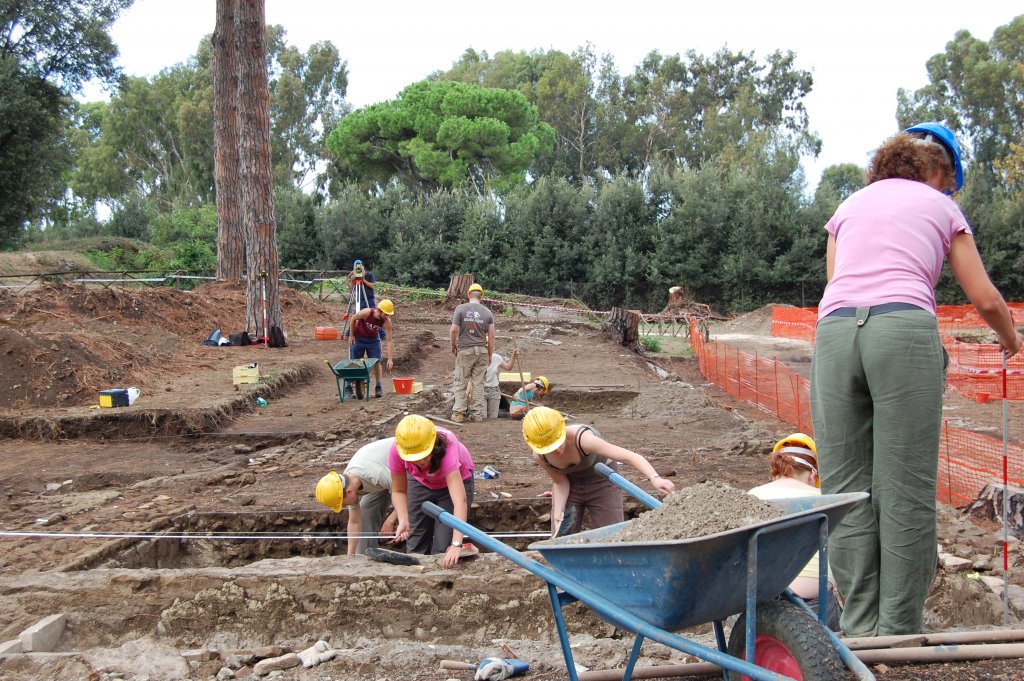Excavation

The very large extent of the Palazzo Imperiale and its adjacent buildings means that excavations at Portus had to be carried out on a sufficiently large scale to provide meaningful results. However, as excavation is a costly and destructive exercise, it was carefully targeted to address specific questions about the development of the site raised through our topographic and geophysical surveys. Furthermore, areas chosen for excavation have had to take into account significant modern disturbances, such as a path running through the Palazzo Imperiale, which have made it hard to relate separate areas and structures that were once part of an integrated complex.
Open-area excavations and sondages were carefully situated in order to answer key questions about the layout and development of the Palazzo Imperiale and the adjacent Building 5. The excavations teased out the structural history of these buildings, which began in the early 2nd c AD and continued without interruption down to a major change in the use of this part of the port in the mid 5th c AD, followed by increasingly less intensive activity from the earlier 6th c AD onwards. The periodization of the buildings was clarified in a relatively traditional way, sorting out the stratigraphic relationship between the many walls, floors and layers of rubble and codifying them in a highly complex series of interlocking Harris matrices. Their digitally recorded outlines were then input into a complex Geographical Information System (GIS) that made it possible for detailed period digital plans to be produced. These correspond to the seven major chronological periods of use for the buildings, as well as many elevations of standing walls and sections, and have provided the basis for a further series of plans for the overall development of the central isthmus as a whole.

